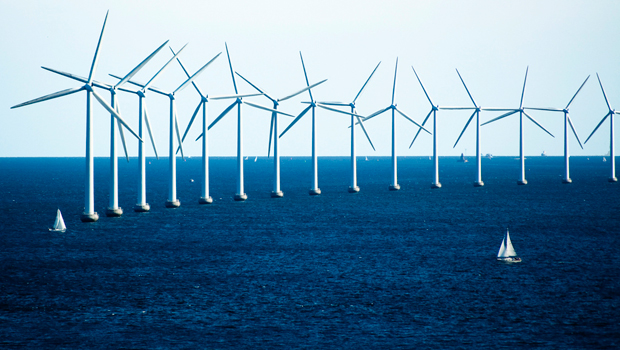The Department of Energy and the Department of the Interior this week announced the first-ever inter-agency plan to rapidly develop massive offshore wind farms. The plan is designed to encourage private industry to develop offshore wind farms — and to produce enough energy to contribute to the Administration’s goal of generating 80% of the nation’s electricity from clean sources by 2035. If the plans come to fruition, the United States could see thousands of square nautical miles of ocean off the coast of the eastern United States developed into wind farms in the coming decade.
“The primary benefit of close collaboration between the Department of Energy and Department of the Interior is to demonstrate the strong commitment of the federal government to developing the nation’s offshore wind energy resources in a responsible manner,” said Tom Welch, a spokesperson for the Department of Energy.
At a joint press conference announcing the initiative earlier this week, Energy Secretary Steven Chu and Interior Secretary Ken Salazar each announced their respective agencies’ specific new programs to help foster private development.
Chu announced that Energy would dedicate $25 million to fund research to improve offshore wind technology. The “DOE will support the development of innovative wind turbine design tools and hardware to provide the foundation for a cost-competitive and world-class offshore wind industry in the United States,” explained a joint press release. The money will go to projects like the development of open-source computational tools for offshore turbines and studies for how best to set-up the systems that will run a large-scale offshore wind farm.
The DOE also announced it would invest in economic studies on how to best sell wind energy once it gets to land as well as a $7.5 million investment in developing the next generation individual wind turbines that convert the wind into energy.
At the press conference, Interior Secretary Ken Salazar announced the specific areas in the Delaware, Virginia, Maryland and New Jersey coasts that will become the first locations of Interior’s “Smart from the Start” initiative, unveiled this past November, to streamline some of the bureaucratic hurdles that have turned the development of a single offshore wind farm into a decade-long headache of red tape.
The president of the Offshore Wind Development Coalition, Jim Lanard, explained to TPM how currently an offshore wind farm must undergo two environmental impact studies before construction can begin. The first study must be done before the developer can even lease the area of water from the government and can between one and two years to complete.
This “first [environmental impact statement] would not provide information that isn’t already available. There would be no new research on birds or marine mammals or how a it will affect an area,” Lanard told TPM. “Smart from the Start” streamlines this first impact study by evaluating certain areas before developers even begin to invest.
Lanard stressed that “Smart from the Start” will not affect the second, full environmental assessment.
Lanard believed that Interior’s announcement would have a large impact on offshore development. “The department kept to its stated time line. And it’s moving forward to help developers get leases so that they can have the certainty of the land.”
While they have sprouted along many other countries’ coasts, there are still no operational offshore wind farms in the United States. Cape Wind is one proposed project for building 130 turbines near the center of Nantucket Sound in Massachusetts. The project has been approved by the Federal Government, but it has faced complaints from residents near the proposed site that the farm would hurt the value of real estate. It has also had trouble finding buyers for its electricity. In May of 2010, Cape Wind made an agreement with a Northeast electrical utility to purchase half of its capacity at a price over twice market rates for electricity.









